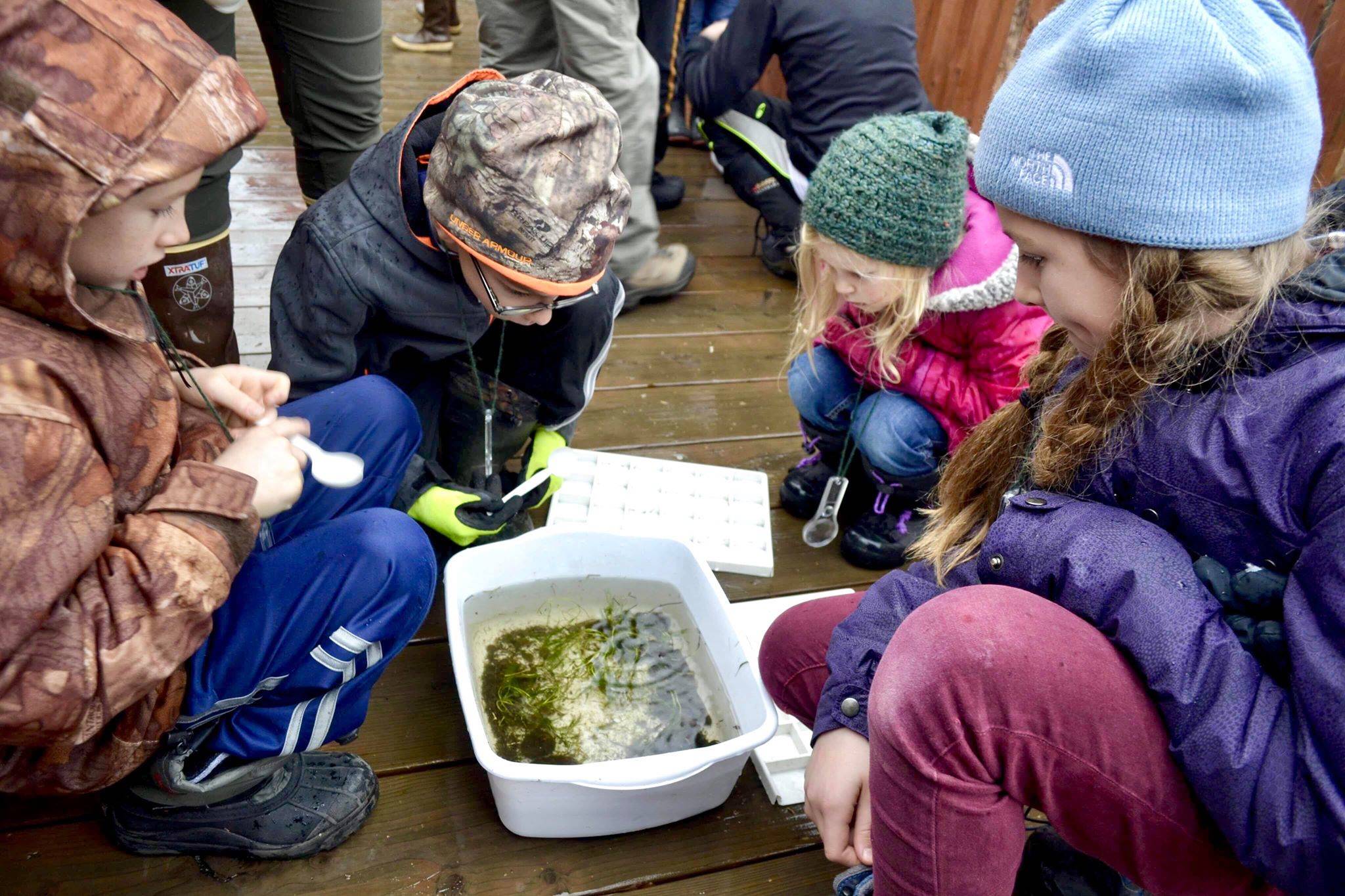It’s Thursday afternoon, and Megan Pike — Kenai Watershed Forum’s newest education specialist and Adopt-A-Stream coordinator — is dressing up an elementary school student like an insect. She gives the student a puffy coat to mimic an insect’s exoskeleton, some homemade antenna made from a headband, pipe cleaner legs, buggy glasses and a pair of wings made from a pillowcase. In the basement of the Kenai Watershed Forum office, Pike is using the student as an example to teach a small group of Connections Homeschool students about the anatomy of an insect, before they head outside to do some invertebrate testing.
Connections Homeschool is one of about 10 schools that participates in the Kenai Watershed Forum’s Adopt-A-Stream program, which brings watershed science and stewardship into the classrooms of the Kenai Peninsula.
The program’s original intent hasn’t changed much since its inception in the 1990s. Adopt-A-Stream seeks to engage students in their environment, teaching them about how to take care of their local creek.
“All these schools are adopting local streams to protect them and also use them as an outdoor classroom to learn,” Pike said.
Students participating in the Adopt-A-Stream program might learn how to test water quality, pH, turbidity and fish habitat. Students also practice taking down field notes and how to record observations.
“We’re building little scientists,” Branden Borneman, Kenai Watershed Forum’s executive director, said.
Sometimes, kids also learn about bugs, like Pike’s group of Connections Homeschool students. After Thursday’s classroom lesson on insects, Pike walks the students and some of their parents to a small bridge over Soldotna Creek. The group stands on the creek’s shore while Pike stands in the stream with a small net. She’s digging into the creek bottom, kicking up rocks and dirt into the net.
The creek bed samples are tossed in a bucket with some water and the children are set on a mission to look for as many bugs as they can. Students then classify and identify each bug they find. Pike reminded the students of their classroom lesson: a diverse group of bugs indicates a healthy stream.
Pike’s group found a handful of species, including caddis flies, stone flies, a couple mayflies and aquatic worms.
Educational outreach is one of the three core values of the Kenai Watershed Forum, and Adopt-A-Stream has helped make the central Kenai Peninsula a well-educated community, Borneman said.
“What other kids in the nation can say ‘anadromous fish,’ let alone tell you what that means or how our activities impact them?” Borneman said. “To me, it’s the biggest privilege we have in this community.”
Adopt-A-Stream has been teaching elementary and middle school students about their environment on the central peninsula for almost 30 years, Borneman said. In its early years, the program was first administered by U.S. Fish and Wildlife. The Kenai Watershed Forum, founded in 1997, took a role in administering the program in the early 2000s, taking over the program completely in 2013.
A Clarion article from 1994 — printed on poster board in Borneman’s office — shows students from K-Beach Elementary, the school with the longest-running relationship with the program, testing water quality in their adopted stream, Slikok Creek.
“We’ve been around long enough doing this that we’re now seeing those kids from the ‘90s and the early 2000s, and they’re becoming adults in our community,” Borneman said. “The knowledge they carry on from these programs and the watershed program’s efforts have really been truly overwhelming in a lot of ways.”
Pike said her favorite part about the program is when students take home the knowledge.
“The coolest thing is when a student comes back to you with an idea to take care of the environment,” Pike said. “Recently we had a kiddo come up and say — ‘I want to start a group to pick up trash over all of Alaska because I don’t want it to harm the animals’ — as a result of our project and class.”
The stream exploring happens all year long. Borneman said activities in the wintertime offer an additional opportunity to teach lessons about the importance of being prepared for cold weather and water.
“We even do it in snow and ice,” Borneman said. “It’s kind of inherent to the program — is teaching kids that we live in Alaska and to not be afraid to be outside. A lot of our jobs take us outside, so we see it as a fun Alaska component to make sure they have the right boots and gear and help them understand that cold water is dangerous and cold weather is dangerous.”
Borneman said recent funding from Marathon, Tesoro, Wells Fargo and an Anchorage foundation called Saltchuk has allowed the program to continue running and expanding.
The Kenai Watershed Forum tries to get into as many local classroom as is practical. At the height of the program, Adopt-A-Stream was in 30 different classrooms reaching more than 5,000 students, Borneman said.
“To me, (I want) to make sure the community understands what a privilege and an honor it is for us to be able to go into classrooms and teach kids,” Borneman said. “The significance of that cannot be overstated. I want to thank the community for how many years they’ve allowed this program to exist.”

